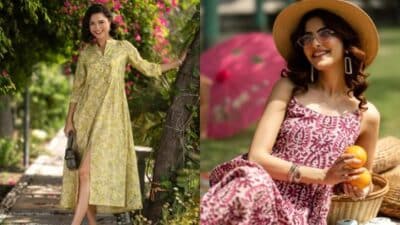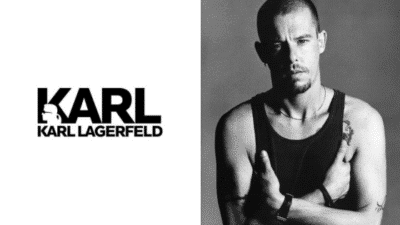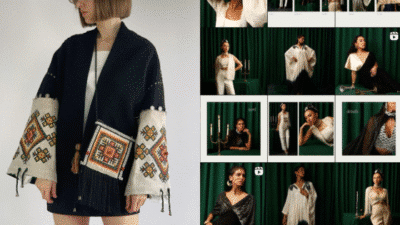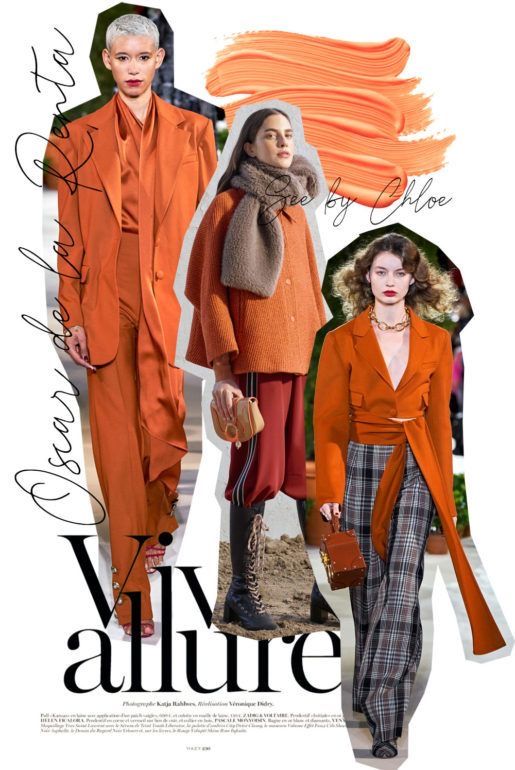

A fashion design portfolio is a collection of a designer’s best work, organized to show their skills and style clearly. The strongest portfolios highlight original ideas, technical skills, and a clear personal aesthetic. This helps designers stand out to schools, employers, or clients.
Good portfolios include sketches, finished garments, and sometimes mood boards or inspiration sources. The way the work is organized and presented can make a big difference in how it is received. Looking at examples helps designers understand what works well and what to avoid.
Designers who study successful portfolios can learn how to balance creativity with professionalism. Using a clear layout and thoughtful presentation shows confidence and attention to detail, which are key in the fashion industry.
Key Takeaways
- A fashion portfolio shows skills and creativity clearly.
- Organizing work well makes a portfolio more effective.
- Learning from examples improves portfolio quality.
What Is a Fashion Design Portfolio?
A fashion design portfolio shows a designer’s skills and style through carefully selected work. It helps designers share their ideas clearly and proves their ability to create original fashion pieces. It can take many forms and usually includes several key elements important to the industry.
Definition and Purpose

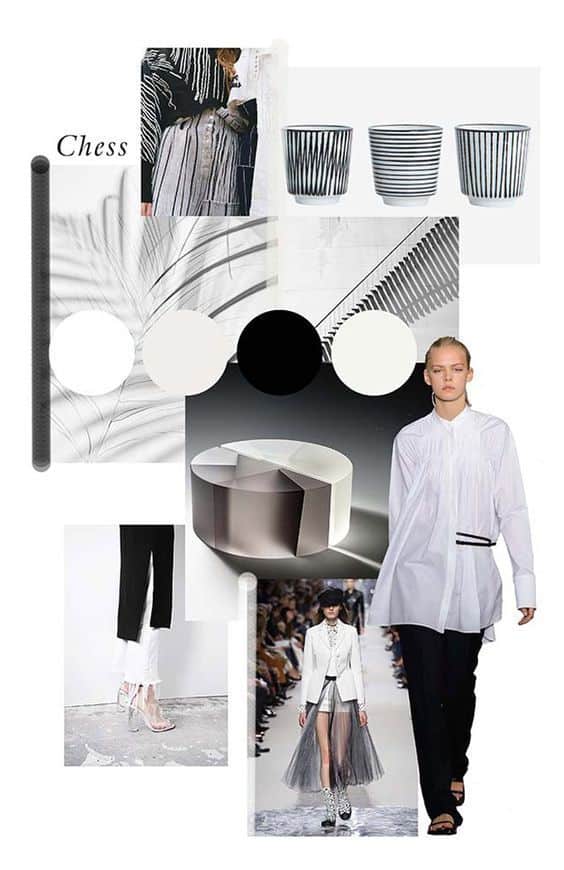
A fashion design portfolio is a collection of a designer’s best work. It displays sketches, finished designs, and sometimes photos of real garments. The main goal is to show creativity, technical skill, and understanding of fashion trends.
It is used when applying for jobs, internships, or school programs. A strong portfolio helps designers stand out to employers or admissions committees. It acts as proof of what the designer can do, beyond just a resume or interview.
Types of Portfolios
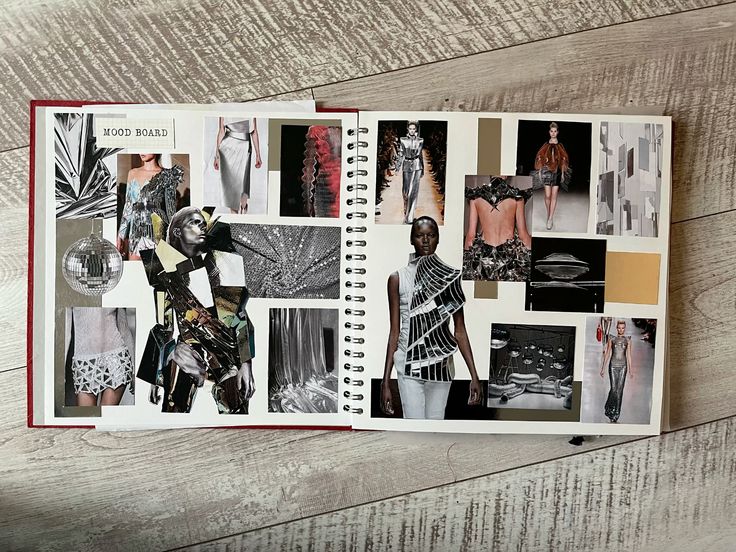
Portfolios can be physical books or digital formats.
- Physical portfolios often include printed sketches, fabric samples, and photos held in a binder or book.
- Digital portfolios might be PDF files, websites, or online galleries with images and videos.
Digital versions make it easy to share work with many people quickly. Designers pick a format based on where they are applying and what suits their style.
Key Components
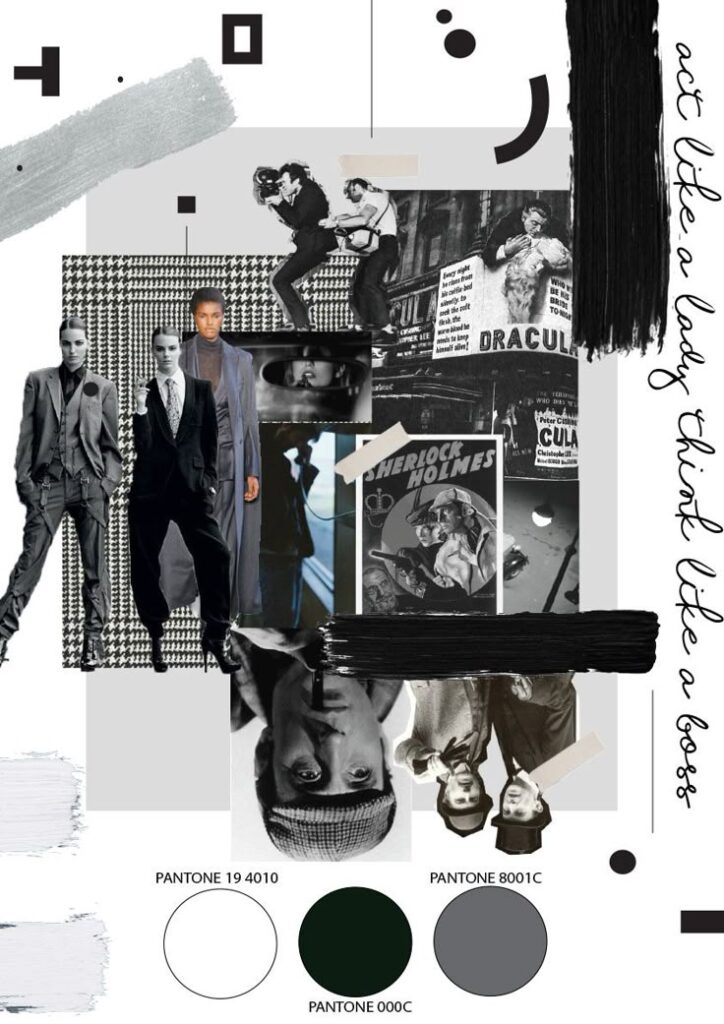
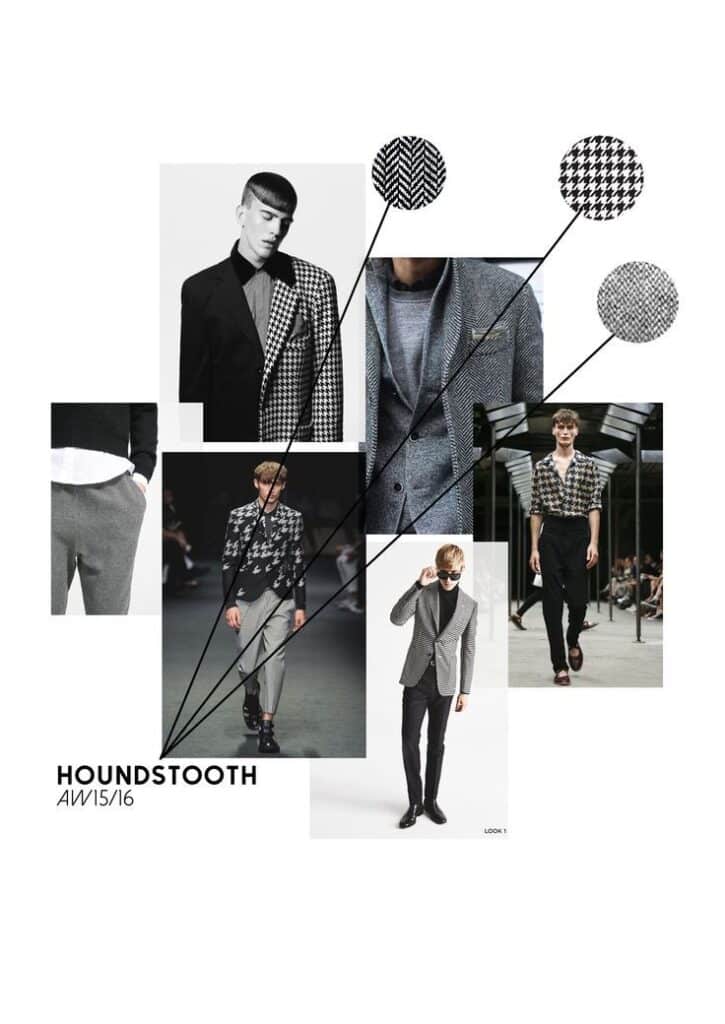
A good portfolio usually includes:
- Sketches and illustrations showing concept ideas and styles.
- Technical drawings with details on garment construction.
- Photos of finished garments to show skill in actual making.
- Mood boards and fabric samples that display inspiration and material choices.
- A resume or short biography to give personal background.
Each piece must be high quality and show the designer’s best work. Organization and presentation are crucial to make the portfolio easy to understand.
Essential Elements of Effective Portfolios
A strong portfolio shows clear visuals, technical skill, and creative ideas. It needs a good mix of photos, detailed images, and drawings to explain the designer’s work.
Visual Presentation
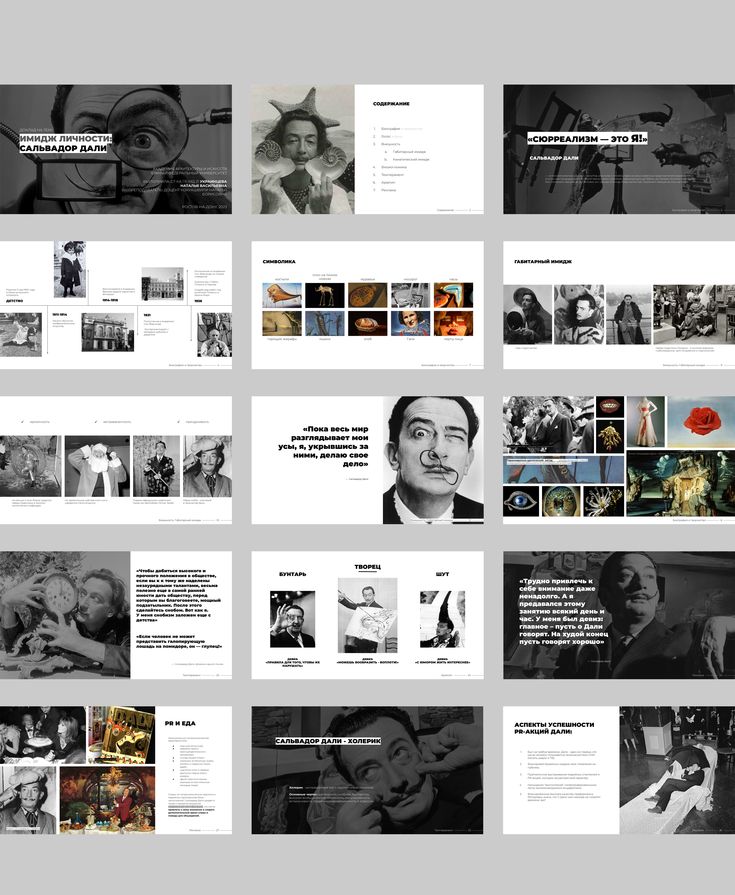

Visuals must be clean and professional. Photos should be well-lit and show the garments clearly from different angles. The background should be simple to keep focus on the clothing.
Organize images so the viewer can follow the design process easily. Use high-resolution photos and avoid clutter. Include images of finished pieces as well as close-ups on key features.
Consistent formatting helps too. Use the same size and style of images throughout. This creates a neat and polished look that makes the portfolio feel complete.
Garment Construction Details
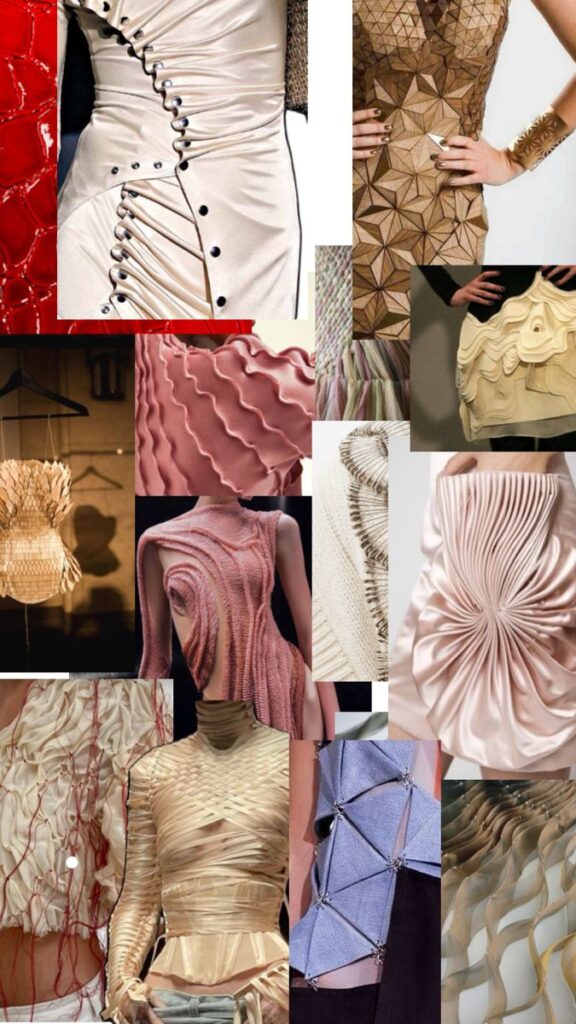

Showing how garments are made is important. Include close-up photos or sketches of seams, stitches, and fabric textures. This proves technical skill and understanding of materials.
Highlight unique techniques or details like embroidery, pleats, or linings. Explain or label these parts to make the viewer notice what sets the work apart.
This section helps show the designer’s ability to turn ideas into real clothes. It also shows knowledge of fit and durability.
Sketches and Illustrations
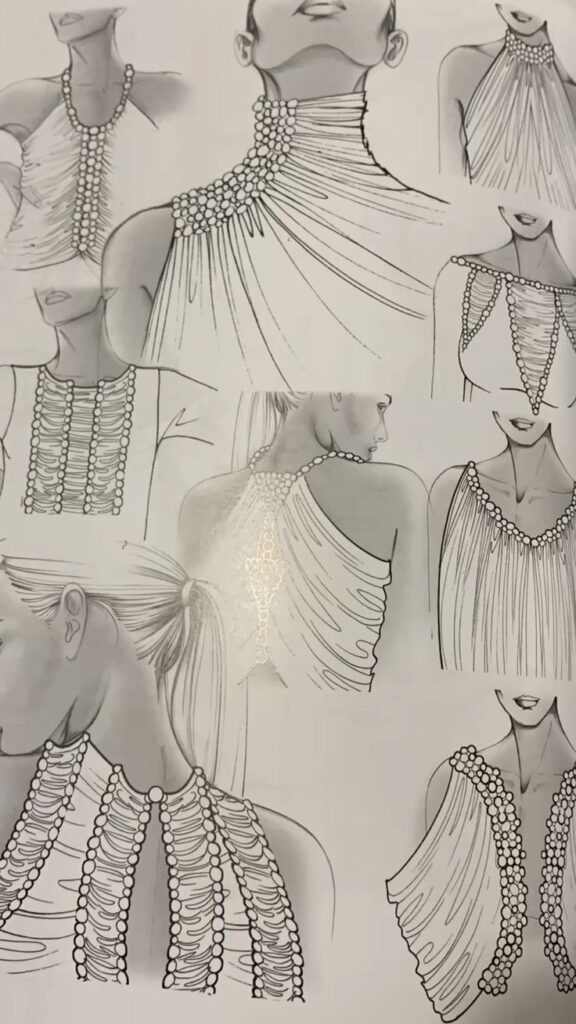
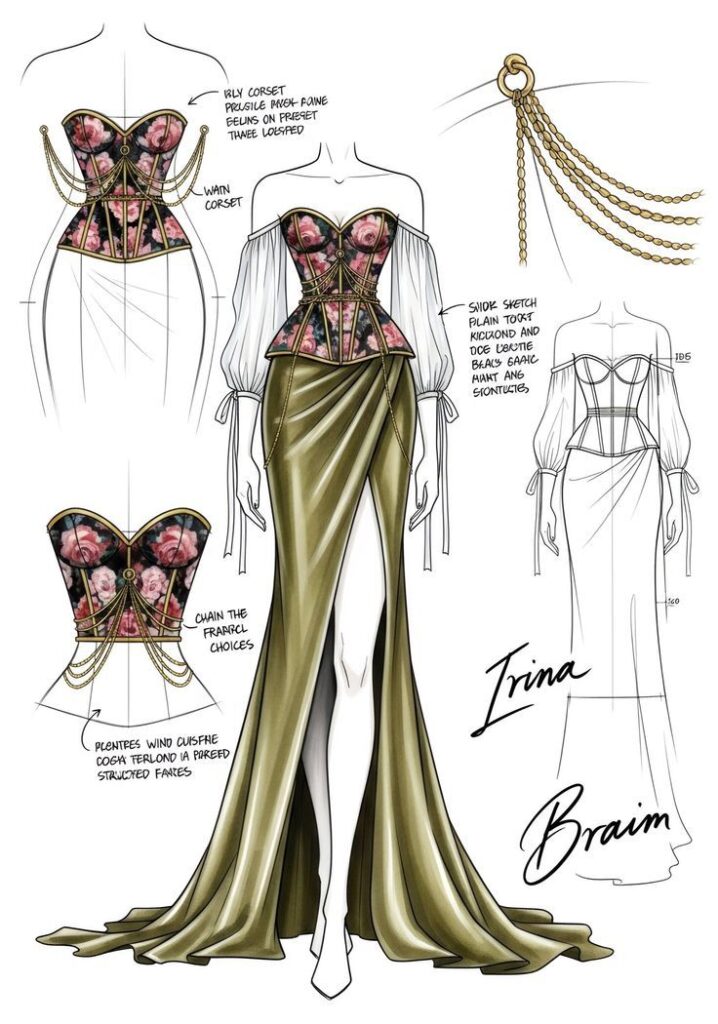
Sketches reveal the creative side of the designer. Include both quick sketches and polished illustrations to show different stages of design.
Use clear lines and colors to express fabric choices and garment shape. Annotations can explain fabric types, colors, or inspiration.
Variety is key: show different poses, views, and details. This helps the viewer understand the full design concept, not just the finished piece.
Best Fashion Design Portfolio Examples
Effective fashion design portfolios show a strong mix of creativity, technical skill, and clear presentation. The best examples are tailored to the designer’s experience level and the platform used to showcase their work.
Student Portfolios


Student portfolios focus on growth and learning. They include class projects, sketches, and fabric studies. These portfolios highlight creativity and technical skills like draping or pattern making.
Students should organize their work to show progress and variety. Including mood boards and design inspiration helps explain concepts clearly. A mix of finished garments and detailed drawings gives a complete picture of abilities.
Presentation matters. Using clean layouts and consistent formatting makes the portfolio easier to review. This helps instructors or future employers quickly understand the student’s strengths.
Professional Portfolios


Professional portfolios show polished, market-ready designs. They feature final clothing collections with photos of garments on models or mannequins. Emphasis is on craftsmanship, fabric choice, and original style.
Professionals often organize portfolios by collection or season. Each project has concept statements and technical sheets that describe methods and materials. This approach shows both creativity and industry knowledge.
A professional portfolio should also highlight collaborations or work with brands. Including press mentions or runway shows adds credibility and context.
Digital and Online Portfolios
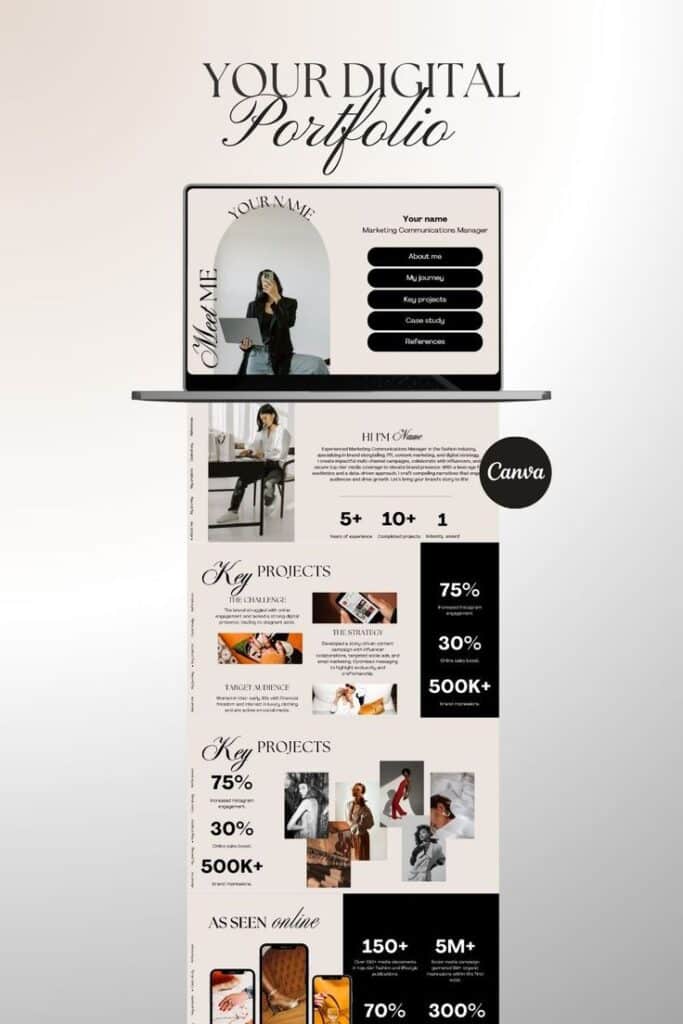
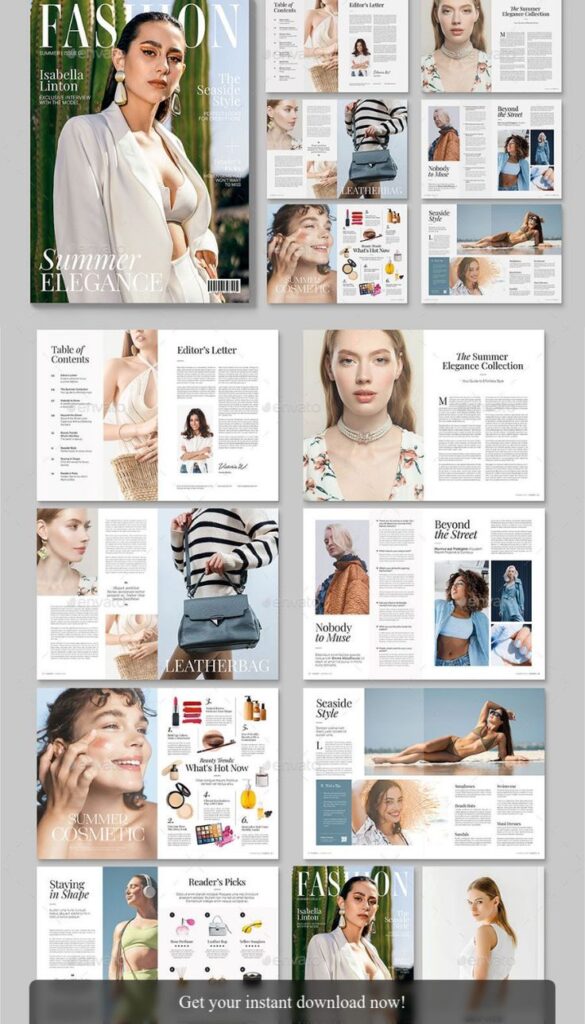
Digital portfolios use websites or platforms like Behance and Instagram to display work. They need high-quality images optimized for fast loading. Clear navigation and categorized galleries help users find relevant projects easily.
Online portfolios should adapt for mobile devices and include contact details. Some use videos or interactive elements to show garment movement and details. This can give a fuller view of the designs.
Maintaining a digital portfolio means regularly updating it. Removing older or weaker work keeps the presentation fresh and relevant for potential clients or employers.
Portfolio Layout and Organization
A fashion design portfolio should be arranged clearly to guide viewers easily through the work. The layout must show a logical order, consistent style, and clear separation between different parts. This helps make a lasting impression and highlights the designer’s skills effectively.
Project Flow

The order of projects in a portfolio matters. It should start with the strongest or most recent work to capture attention quickly. Each project should lead smoothly to the next, showing growth or different skills.
Including a brief description for each project helps explain the concept and process. Images should be high quality and arranged neatly, with sketches, fabric samples, and final pieces grouped together. Avoid clutter and keep enough white space so the viewer’s eyes can rest.
Theme Cohesion
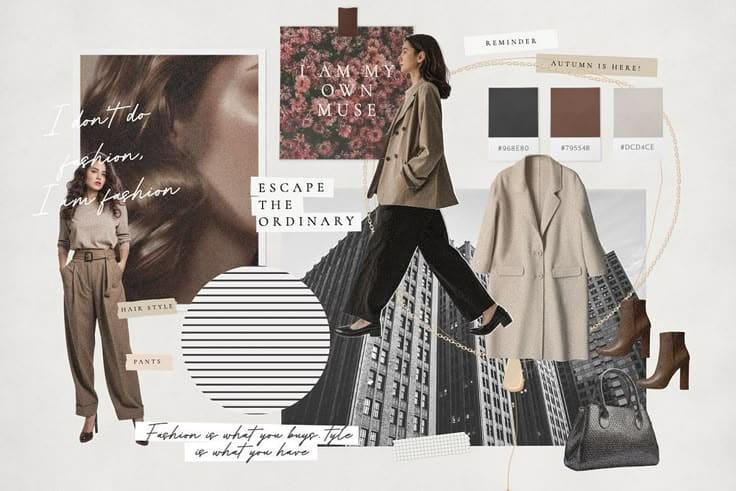
All parts of the portfolio should support a common theme or style. This could be based on the designer’s personal vision, color palette, or technique. Consistent fonts and colors link the pages and make the work feel unified.
Different projects can show variety, but they should still fit into the overall artistic voice. This helps the viewer understand the designer’s unique style clearly. Using similar layouts or repeated design elements keeps the presentation balanced.
Section Dividers

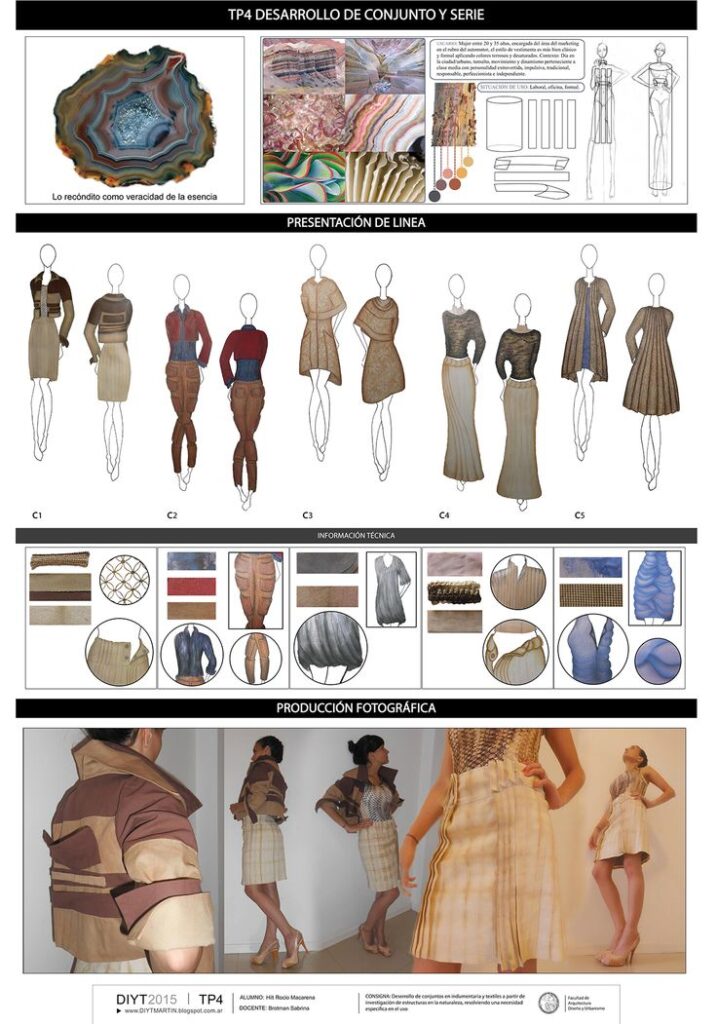
Clear section dividers improve navigation in a portfolio. They mark where one project or group of works ends and another begins. Dividers can use bold titles, color blocks, or simple lines.
Dividers also create pauses, giving viewers space to reset before starting a new topic. Simple design is better; avoid distracting images or complex graphics. These breaks make the portfolio feel organized and professional.
Tips for Crafting a Standout Portfolio
A strong fashion design portfolio shows clear identity, smart choices of projects, and a polished way to share work. It highlights skills while keeping the viewer’s attention with well-organized content and style.
Personal Branding
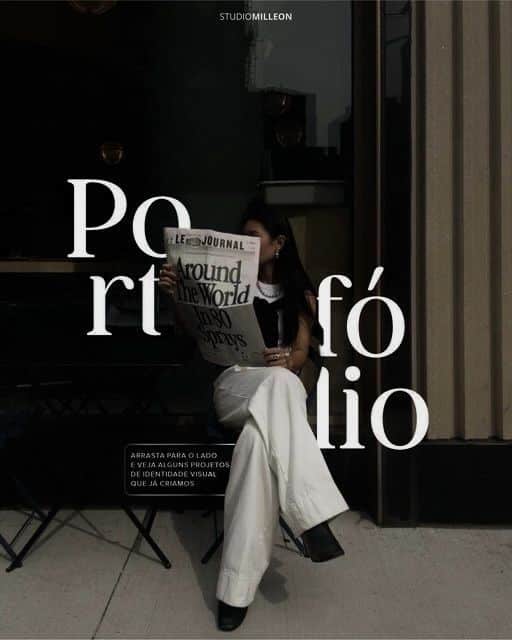
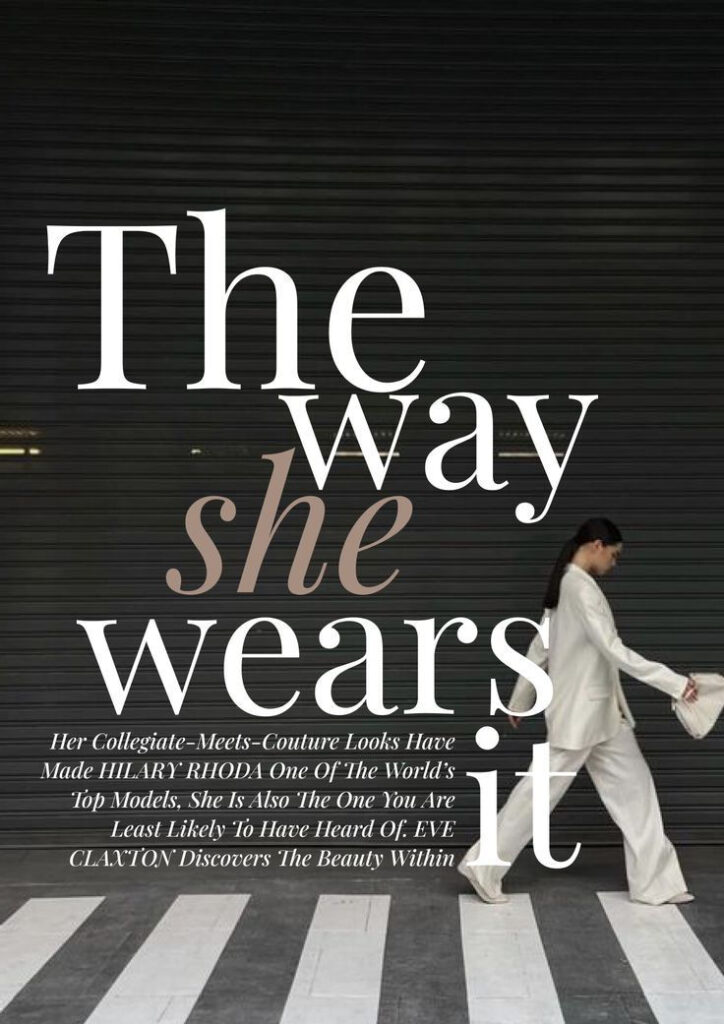
Personal branding means showing who the designer is through their portfolio. It starts with a clear style that matches their design vision. Consistent colors, fonts, and logos help create a professional look.
The portfolio should include a short bio with key skills and influences. This helps viewers connect with the designer’s story. A unique voice, whether bold or minimalist, makes the portfolio more memorable.
Using a simple but recognizable layout supports the brand. Every page should feel part of the same story. Personal branding builds trust and shows the designer’s identity beyond just their clothes.
Selection of Work


Choosing the right pieces shows skill and style. Designers should include a mix of their best projects, showing range and specialization. Quality beats quantity—only the strongest work should make the cut.
It helps to group projects by theme or technique. This makes the portfolio easy to follow. Projects that solve design problems or show unique techniques stand out more.
Adding short descriptions explains the concept, fabrics used, and challenges faced. This adds depth and shows the designer’s thought process. Avoid including unfinished or weak pieces.
Presentation Techniques


How the portfolio looks affects how the work is seen. Clean, uncluttered layouts keep focus on the designs. White space helps images and text breathe without feeling crowded.
High-quality photos are essential. Clear shots with good lighting show details like texture and fit. Including sketches or mood boards can add context but they should be well-arranged.
Using digital tools like PDFs or websites allows easy sharing. Interactive elements, like clickable links or videos, can enhance the presentation but should not distract. Consistent formatting creates a smooth viewing experience.
Common Mistakes to Avoid
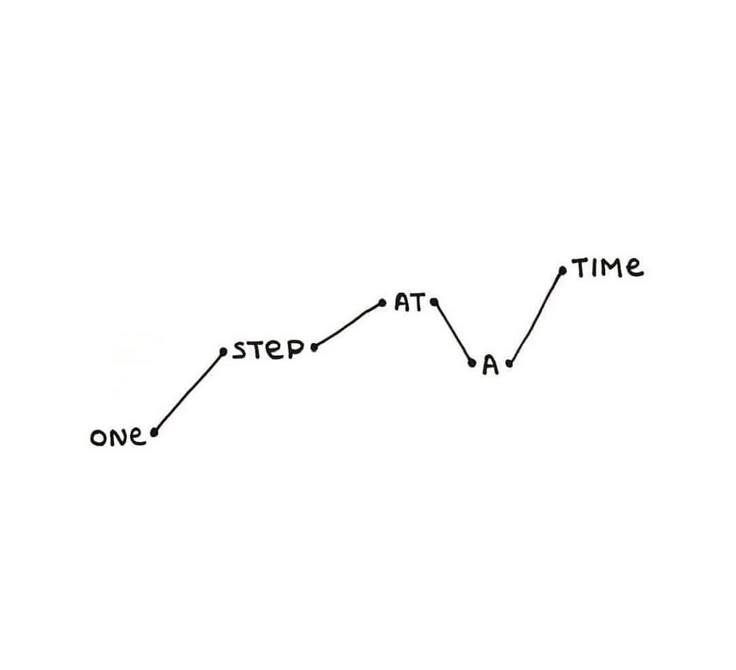
One common mistake is including too many designs. A portfolio should show quality, not quantity. Too many pieces can overwhelm the viewer and dilute the impact of the best work.
Another error is poor image quality. Blurry or dark photos make the work look less professional. Clear, well-lit images are essential to showcase details.
Many forget to organize their portfolio. Random order can confuse the viewer. A logical flow helps tell a story or shows skill growth.
Some designers use inconsistent formats. Mixing different layouts or fonts distracts from the designs. Keeping a uniform style makes the portfolio cleaner and easier to read.
Ignoring project descriptions is also a mistake. Brief notes about each design explain the concept and process. This adds context and shows thoughtfulness.
Lastly, many portfolios lack originality. Copying trends or other designers’ work can make the portfolio feel generic. It’s best to highlight personal style and unique ideas.
| Mistake | Why to Avoid It | What to Do Instead |
|---|---|---|
| Too many designs | Overwhelms viewer | Select best pieces only |
| Poor image quality | Looks unprofessional | Use clear, well-lit photos |
| Disorganized layout | Confuses viewer | Arrange in logical order |
| Inconsistent styles | Distracts from work | Keep format uniform |
| No descriptions | Lacks context | Add brief project notes |
| Lack of originality | Feels generic | Show personal style |
Showcasing Portfolios for Different Audiences
Portfolios should be tailored to fit the needs of the audience. This includes highlighting different skills, styles, and formats. The way a portfolio is presented can vary greatly depending on whether it is aimed at schools, professionals, or fashion shows.
For Fashion Schools
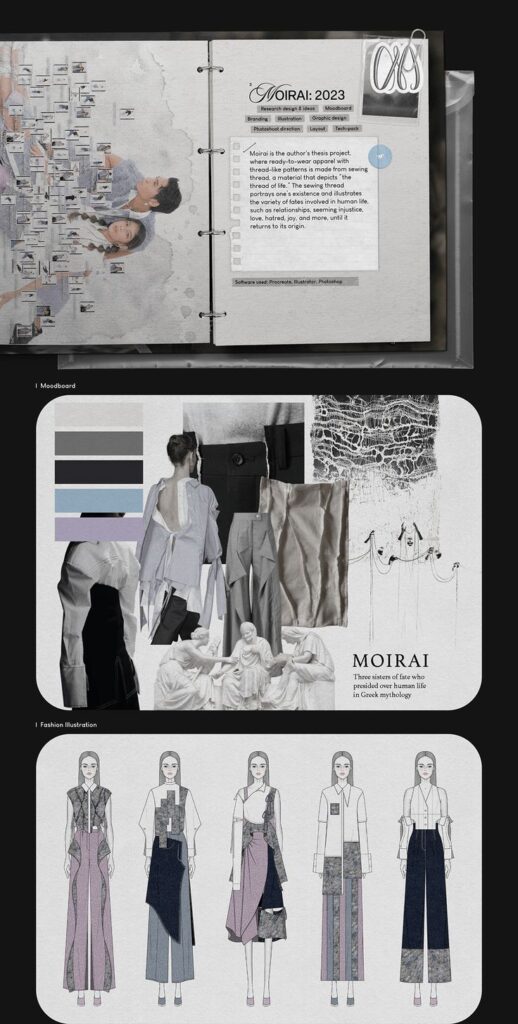

Fashion schools look for creativity, technique, and potential. Portfolios for schools should focus on a variety of sketches and designs that show the designer’s growth and unique style. Including work that demonstrates an understanding of fabrics, color theory, and construction is important.
Students should organize their portfolios chronologically to show progress. Clear labeling and captions help explain ideas and processes. Schools also value portfolios with a mix of hand-drawn and digital work. Adding personal projects or experimental pieces can make the portfolio stand out.
For Industry Professionals

Industry professionals want to see market-ready skills and professionalism. Portfolios for them should emphasize technical skills, attention to detail, and the ability to follow industry trends. Clean and polished presentations are a must.
It is helpful to include mood boards, technical flats, and photos of finished garments. Showcasing collaborations or work with manufacturers can increase credibility. The focus should be on versatility and knowledge of production constraints.
For Fashion Shows
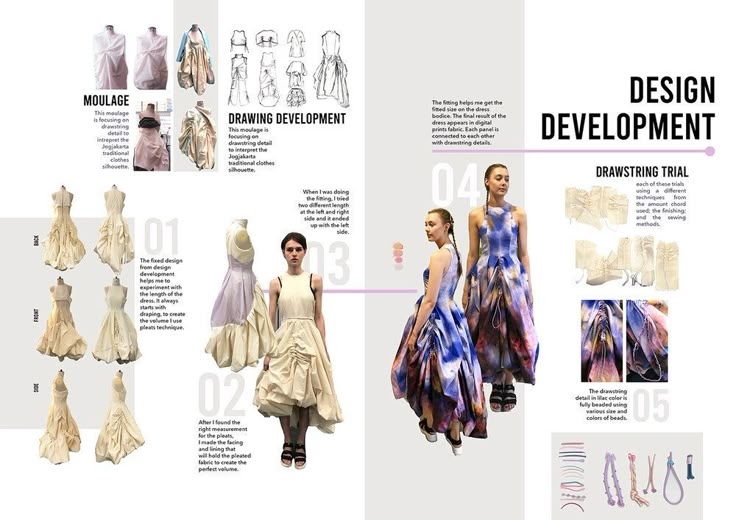
Fashion show portfolios highlight a strong visual story and showmanship. The portfolio should capture the theme of the collection and include full looks, not just sketches. High-quality photos from previous shows or styled shoots are valuable.
The designer needs to demonstrate how pieces flow together on the runway. Videos or lookbooks that illustrate movement and fit add impact. Including the inspiration behind each collection helps judges or buyers connect with the work. Crisp, dramatic visuals are key here.
Inspiration From Notable Designers

Many fashion design portfolios draw inspiration from well-known designers who changed the industry. These designers show how creativity and personal style shape successful work.
Coco Chanel is famous for her simple, elegant designs. Portfolios influenced by her often focus on clean lines and timeless pieces.
Alexander McQueen brought drama and innovation to fashion. His work encourages designers to be bold and experimental. Portfolios inspired by him use striking visuals and unusual concepts.
Yves Saint Laurent is known for mixing classic and modern styles. His approach inspires portfolios to balance tradition with fresh ideas.
| Designer | Key Traits | Portfolio Focus |
|---|---|---|
| Coco Chanel | Elegance, Simplicity | Minimalist, timeless looks |
| Alexander McQueen | Bold, Innovative | Creative, powerful images |
| Yves Saint Laurent | Classic & Modern | Balancing styles |
These designers show that a portfolio can highlight a clear vision. They encourage young fashion artists to express who they are while learning from the past.
Trends in Modern Fashion Design Portfolios

Modern fashion design portfolios often emphasize clean and simple layouts. Designers use white space to make their work stand out and keep the focus on garments and sketches.
Digital portfolios are becoming more popular. They allow easy sharing and include features like videos, 360-degree views, and clickable elements.
Many designers now include sustainability projects. Showing eco-friendly materials or processes highlights awareness of environmental issues.
Storytelling is key. Designers use portfolios to explain their inspiration, creative process, and the story behind each collection.
A trend is the use of mixed media. Portfolios include sketches, photos, fabric swatches, and even digital illustrations to give a full picture.
Color palettes in portfolios tend to be neutral or muted. This helps to keep attention on the designs without distraction.
Here is an example of common elements in modern portfolios:
| Element | Description |
|---|---|
| Layout | Minimalist, clean structure |
| Format | Mostly digital with some print |
| Content | Sketches, photos, videos |
| Themes | Sustainability, storytelling |
| Visual Style | Neutral colors, mixed media |
These trends help designers present their skills clearly and professionally.
- 759shares
- Facebook0
- Pinterest759
- Twitter0

